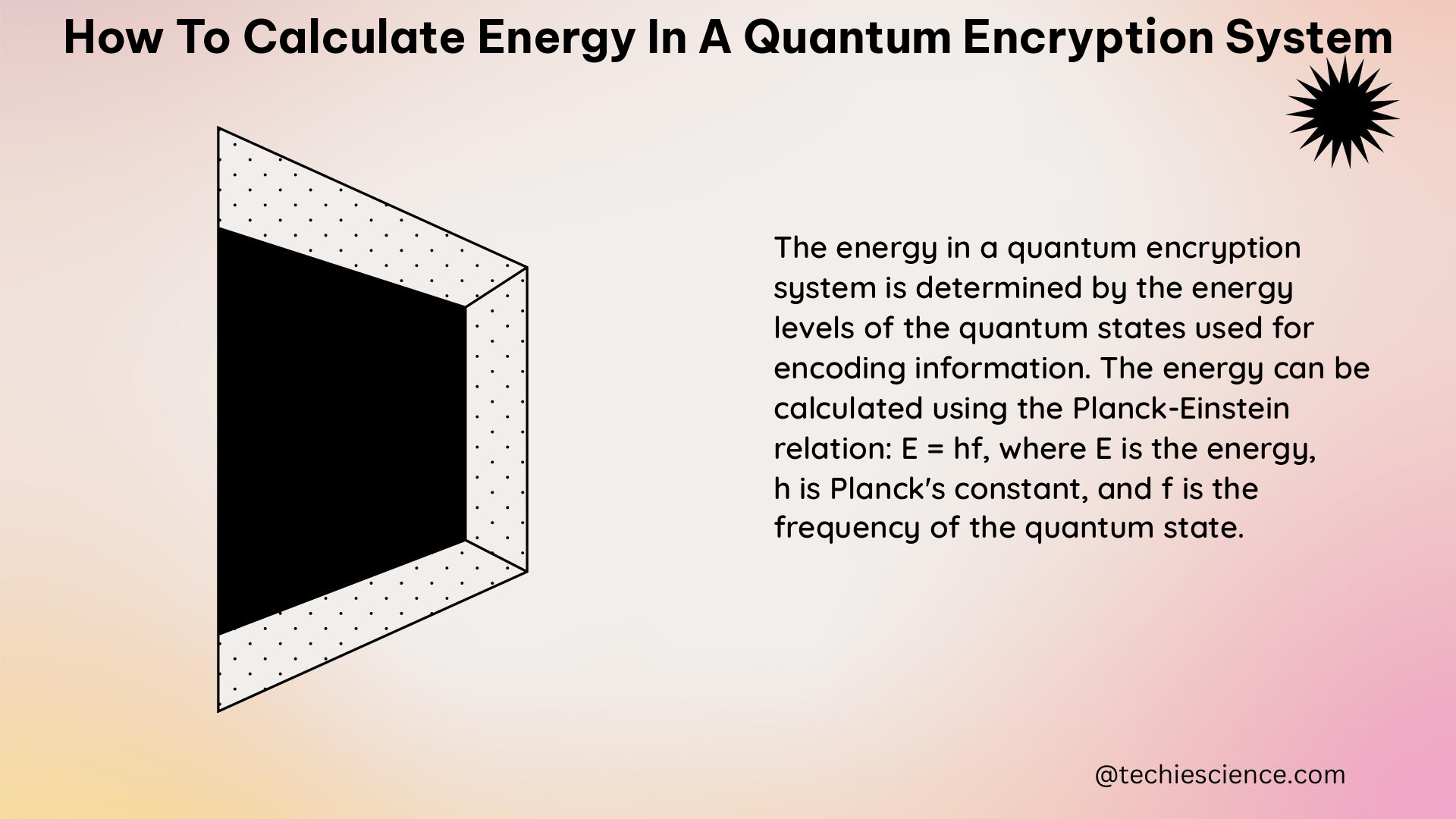Summary
To calculate the energy required to operate a cryptanalytically relevant quantum computer (CRQC) that can break cryptographic public keys, we need to consider the physical resources, including the number of qubits, the spacetime volume, and the average power consumption per qubit. The electrical energy can be decomposed into the product of the spacetime volume and the average power consumption per qubit. By estimating these factors, we can understand the resources required to build and operate a CRQC.
Understanding the Key Factors

Spacetime Volume
The spacetime volume is an estimate of the number of qubit-days required to break one public key. According to the literature, this value ranges over about six orders of magnitude, from 5.9 × 10^3 to 5.9 × 10^9 qubit-days.
Average Power Consumption per Qubit
The average power consumption per qubit is a crucial factor, but there are no quantitative estimates available in the prior literature. To make a rough estimate, the authors of the working paper from the Homeland Security Operational Analysis Center combined data points from existing superconducting-transmon quantum computers and extrapolated them to larger scales. They estimated that a plausible value for an eventual superconducting-transmon CRQC would be about 6 watts/qubit.
Calculating the Energy Requirements
To calculate the energy required to operate a CRQC, we can use the following formula:
Energy = Spacetime Volume × Average Power Consumption per Qubit
Using the estimates from the literature:
- Spacetime Volume: 5.9 × 10^6 qubit-days
- Average Power Consumption per Qubit: 6 watts/qubit
Plugging these values into the formula, we get:
Energy = 5.9 × 10^6 qubit-days × 6 watts/qubit
= 3.54 × 10^7 watt-days
= 125 MW of electrical power
Furthermore, the authors estimated that using a CRQC to break one public key would cost about $64,000 for electricity alone at current prices.
Theoretical Considerations
Quantum Advantage in Cryptography
Quantum computers have the potential to provide a significant advantage in cryptography, as they can perform certain algorithms, such as Shor’s algorithm, much more efficiently than classical computers. This advantage is known as “quantum advantage” and can be leveraged to break certain cryptographic public keys.
Quantum Key Distribution
Quantum key distribution (QKD) is a technique that uses the principles of quantum mechanics to distribute cryptographic keys securely. QKD can be used to mitigate the threat posed by quantum computers, as it ensures the confidentiality of the keys even in the presence of a powerful quantum adversary.
Practical Considerations
Qubit Scalability
One of the key challenges in building a CRQC is the scalability of qubits. Current quantum computers have a limited number of qubits, and scaling up to the number required for breaking cryptographic public keys is a significant engineering challenge.
Power Consumption and Cooling
The high power consumption and cooling requirements of a CRQC are also major practical challenges. The estimated 125 MW of electrical power required to operate a CRQC highlights the immense energy demands of such a system.
Cost and Feasibility
The estimated cost of $64,000 to break one public key using a CRQC suggests that such an endeavor may not be feasible for most adversaries. However, as quantum computing technology continues to advance, the cost and feasibility of building a CRQC may change over time.
Conclusion
Calculating the energy required to operate a CRQC is a complex task that involves considering the spacetime volume and the average power consumption per qubit. By understanding these factors, we can better assess the resources required to build and operate a CRQC, as well as the potential impact on cryptographic security. This knowledge can inform the development of further guidance and stakeholder engagements with the critical infrastructure community.
References
- Estimating the Energy Requirements to Operate a Cryptanalytically Relevant Quantum Computer. Homeland Security Operational Analysis Center. 2023-04-28. https://www.rand.org/content/dam/rand/pubs/working_papers/WRA2400/WRA2427-1/RAND_WRA2427-1.pdf
- Quantum Key Distribution in Space. Touch, Gordon. Aerospace Corporation. 2020-07-02. https://aerospace.org/sites/default/files/2020-07/Touch-Gordon_QKD_20200715.pdf
- Quantum Advantage in Cryptography. arXiv. 2022-06-04. https://arxiv.org/pdf/2206.04078.pdf

The lambdageeks.com Core SME Team is a group of experienced subject matter experts from diverse scientific and technical fields including Physics, Chemistry, Technology,Electronics & Electrical Engineering, Automotive, Mechanical Engineering. Our team collaborates to create high-quality, well-researched articles on a wide range of science and technology topics for the lambdageeks.com website.
All Our Senior SME are having more than 7 Years of experience in the respective fields . They are either Working Industry Professionals or assocaited With different Universities. Refer Our Authors Page to get to know About our Core SMEs.